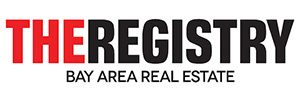The ICSC Monterey event brought together a mix of retail professionals, investors, and dealmakers from across the region. With approximately 1,000 attendees, the conference served as a solid pulse-check on the current state of the retail real estate market—and where…
With an unpredictable Q1 nearly behind us, we have seen overall rates come down resulting in a welcomed increase in activity across most of the lending community. Life Company, CMBS, and Agency lender origination continue to be strong as all-in…
This week we congratulate Bridger Fund, a CRE mortgage fund and joint venture partner with Slatt Capital, on its Third Anniversary. Since launching in 2022, Bridger Fund has grown into a trusted source for short-term bridge financing, helping investors, brokers…
The BTR (Build-to-Rent) market has recently underperformed due to market saturation, high construction costs, rising interest rates, lower rental yields, and concerns about renter flexibility—all contributing to higher vacancy rates and slower rent growth in some regions. Simultaneously, capital markets…
Analyzing expense reimbursements is essential for managing the financial success of retail, industrial, and office properties. These reimbursements significantly impact operations and planning because they influence budget allocation and tenant satisfaction, which makes it essential to have a clear understanding…
Commercial real estate bridge loans serve as a valuable financing option for investors by bridging the gap between immediate capital needs and long-term financing solutions. These types of loans are typically utilized in commercial real estate transactions where quick access…
When it comes to investing in commercial real estate, understanding the value of a property goes much further than simply comparing property costs in the area. Instead, investors must carefully consider the cost of a property in contrast to the…
Amortization
The process of gradually reducing or paying off a debt or loan through scheduled, periodic payments over a specified period of time. It involves the systematic repayment of both the principal amount borrowed and the accrued interest charges.
It’s important to note that the specific terms and conditions of an amortizing loan, including interest rates, payment frequency, and any prepayment penalties, are outlined in the loan agreement. Borrowers should review these terms carefully and consult with lenders or financial professionals to fully understand the implications of the amortization process.
CAP Rate
The capitalization rate, commonly referred to as the CAP rate, is a key metric used to assess the potential return on investment for an income-producing property. It provides a measure of the property’s net operating income (NOI) relative to its purchase price or value.
The CAP rate is expressed as a percentage and is calculated by dividing the property’s net operating income by its current market value or purchase price.
The formula for calculating the CAP rate is as follows:
CAP Rate = Net Operating Income / Property Value
Net Operating Income (NOI)
Net Operating Income (NOI) is a key measure that shows the income a property generates after subtracting operating expenses but before financing costs and taxes. It helps determine a property’s profitability and cash flow potential. Lenders use NOI to assess a property’s loan eligibility. A higher NOI means a more financially stable property, increasing the chances of favorable financing terms. Investors and lenders rely on NOI to make informed decisions in commercial real estate and mortgage lending.
Treasury Rate
The Treasury Rate is the interest rate on U.S. government bonds. It acts as a benchmark for commercial real estate loans. Mortgage lenders use the Treasury Rate as a reference point to set interest rates. When the Treasury Rate goes up, it means borrowing costs increase, and borrowers may face higher rates for commercial real estate loans.


